 Eczema is a skin disease, mostly accompanied by severe itching. In the chronic stages, there may be oozing of pus and bleeding from the affected regions. It is also commonly referred to as dermatitis. In Ayurveda, eczema is known as Vicharchika. It is caused due to the vitiation of all the three doshas – vata, pitta and kapha. Eczema generally refers to a range of persistent skin conditions with visible signs such as redness, itching, flaking, blistering, cracking, pigmentation, fissures, scratch marks, oozing , bleeding etc. It is Pitta that controls all the metabolic activities in the body. An aggravated Pitta will manifest itself in the form of various skin diseases such as Eczema. Other factors such as climate, age, food, stress, nature of the skin etc also play a vital role in the occurrence of this disease. In some cases, however, hereditary factors also do play a vital part in the occurrence of this disease. Eczema is basically classified in to two types. Exogenous and endogenous. In the former, there is no secretion whereas in the latter, water may come out from the patches, either due to scratching or otherwise. Eczema is a constitutional disease. Its cause is deep-seated within the body. Hence external medications are not effective in eczema.
Eczema is a skin disease, mostly accompanied by severe itching. In the chronic stages, there may be oozing of pus and bleeding from the affected regions. It is also commonly referred to as dermatitis. In Ayurveda, eczema is known as Vicharchika. It is caused due to the vitiation of all the three doshas – vata, pitta and kapha. Eczema generally refers to a range of persistent skin conditions with visible signs such as redness, itching, flaking, blistering, cracking, pigmentation, fissures, scratch marks, oozing , bleeding etc. It is Pitta that controls all the metabolic activities in the body. An aggravated Pitta will manifest itself in the form of various skin diseases such as Eczema. Other factors such as climate, age, food, stress, nature of the skin etc also play a vital role in the occurrence of this disease. In some cases, however, hereditary factors also do play a vital part in the occurrence of this disease. Eczema is basically classified in to two types. Exogenous and endogenous. In the former, there is no secretion whereas in the latter, water may come out from the patches, either due to scratching or otherwise. Eczema is a constitutional disease. Its cause is deep-seated within the body. Hence external medications are not effective in eczema.

 Snehapana: Medicated ghee, eaten in empty stomach is called snehapanam. The treatment involves the removal of hard-core toxins and wastes from the body. Snehapanam is one of the excellent pre purification therapies. The ghee lubricates all the channels of the body, including the lymph, and forces out the toxins from them, into the digestive tract. It also calms down the mind and reduces mental stress. As a result, the body immunity increases, the effects of the ailments subside and frequent recurrence of the disease is prevented. It also increases the person's appetite level and accelerates peristaltic movements of the intestine.The medicated ghee is prepared by processing herbal paste, herbal juice, milk, ghee etc. The herbal paste is made from herbs like amaltas, sarsaparilla, jamun, Indian kino tree, guggul, ginger, neem, onion, chopchini, triphala, malabar nut, Cardamom, asparagus, mustard etc. The herb chopchini has powerful anti inflammatory and antibiotic properties and gives the effect of a steroid. Amaltas and neem are excellent for curing skin ailments. Snehapanam, done once a day in empty stomach, is usually continued for 3 to 7 days. The exact duration and type of ghee to be used are decided by the doctors who treat you taking in to consideration the age, place, climate, and body constitution of the person.
Snehapana: Medicated ghee, eaten in empty stomach is called snehapanam. The treatment involves the removal of hard-core toxins and wastes from the body. Snehapanam is one of the excellent pre purification therapies. The ghee lubricates all the channels of the body, including the lymph, and forces out the toxins from them, into the digestive tract. It also calms down the mind and reduces mental stress. As a result, the body immunity increases, the effects of the ailments subside and frequent recurrence of the disease is prevented. It also increases the person's appetite level and accelerates peristaltic movements of the intestine.The medicated ghee is prepared by processing herbal paste, herbal juice, milk, ghee etc. The herbal paste is made from herbs like amaltas, sarsaparilla, jamun, Indian kino tree, guggul, ginger, neem, onion, chopchini, triphala, malabar nut, Cardamom, asparagus, mustard etc. The herb chopchini has powerful anti inflammatory and antibiotic properties and gives the effect of a steroid. Amaltas and neem are excellent for curing skin ailments. Snehapanam, done once a day in empty stomach, is usually continued for 3 to 7 days. The exact duration and type of ghee to be used are decided by the doctors who treat you taking in to consideration the age, place, climate, and body constitution of the person. Swedana: Swedanam means medicinal perspiration and involves the active sweating of the whole body using medicated steam. Through this process, the agni is increased and the fatty tissues get mobilized. The channels of the body are softened and this causes the impurities to move out through the skin by way of sweat. Swedanam as a prepurification therapy for eczema cleanses the channels thoroughly and helps to control the vitiated doshas. For swedana there is a chamber that has been well- heated for a considerable period of time or inhaling medicated steam. This helps the patient to sweat considerably and helps to throw out the impurities through the pores of the skin.
Swedana: Swedanam means medicinal perspiration and involves the active sweating of the whole body using medicated steam. Through this process, the agni is increased and the fatty tissues get mobilized. The channels of the body are softened and this causes the impurities to move out through the skin by way of sweat. Swedanam as a prepurification therapy for eczema cleanses the channels thoroughly and helps to control the vitiated doshas. For swedana there is a chamber that has been well- heated for a considerable period of time or inhaling medicated steam. This helps the patient to sweat considerably and helps to throw out the impurities through the pores of the skin.

 Diet regulation for eczema: Since food is one of the causes of eczema, it is important to be cautious about the diet. Generally a person with eczema can have a normal diet, but without the specific allergic factor. Depending on the constitution of the person, he or she can be allergic to just about any kind of food. Hence, one of the steps of diagnosing eczema is to identify if any foodstuff is the cause of the eczema. If so, then that food must be eliminated from the diet.
Diet regulation for eczema: Since food is one of the causes of eczema, it is important to be cautious about the diet. Generally a person with eczema can have a normal diet, but without the specific allergic factor. Depending on the constitution of the person, he or she can be allergic to just about any kind of food. Hence, one of the steps of diagnosing eczema is to identify if any foodstuff is the cause of the eczema. If so, then that food must be eliminated from the diet.






 Dec 2024
Dec 2024
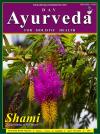 May 2024
May 2024
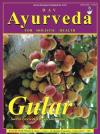 September 2022
September 2022
 April 2022
April 2022
 October 2020
October 2020
 Jan 2020
Jan 2020
 June 2019
June 2019
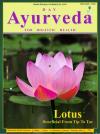 January-February 2019
January-February 2019
 Augest-September
Augest-September
 April 2018
April 2018
 November 2017
November 2017
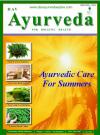 June 2017
June 2017
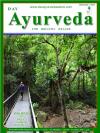 November 2016
November 2016
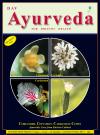 September 2015
September 2015
 March 2015
March 2015
 July 2014
July 2014
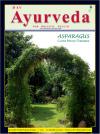 January 2014
January 2014
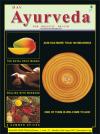 July2013
July2013
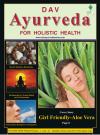 March 2013
March 2013
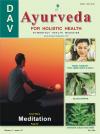 May 2012
May 2012
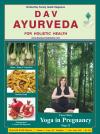 May 2011
May 2011
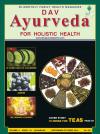 Sep 2010
Sep 2010
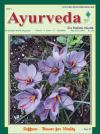 Jun 2010
Jun 2010
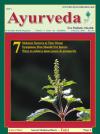 Feb 2010
Feb 2010
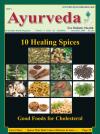 December 2009
December 2009
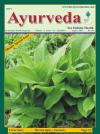 August 2009
August 2009
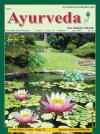 June 2009
June 2009
 Feb 2009
Feb 2009
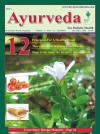 December 2008
December 2008
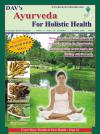 October 2008
October 2008
 March 2008
March 2008
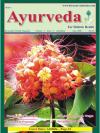 July 2008
July 2008
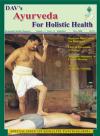 May 2008
May 2008